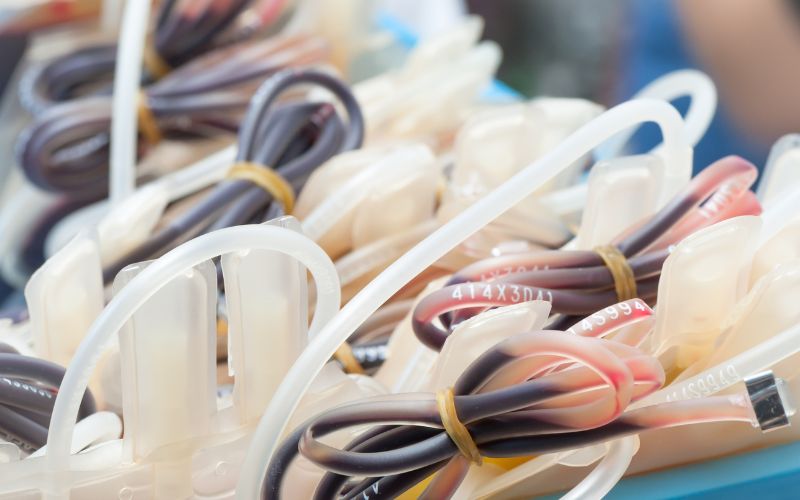Cord blood banking has emerged as a crucial aspect of family planning, offering parents the opportunity to preserve a valuable resource for their child’s future health. The process involves collecting and storing the umbilical cord blood, which is rich in precious stem cells capable of treating a variety of diseases and medical conditions. While the benefits of cord blood banking are well-established, many prospective parents are concerned about the cost involved. In this article, we will explore the factors that influence cord blood banking prices, the value it offers for families, and how to make an informed decision when considering this investment in your child’s health.
The Significance of Cord Blood Banking
Before delving into the cost aspect, it’s essential to understand the significance of cord blood banking in the field of medicine. Cord blood contains hematopoietic stem cells, which are responsible for producing blood cells in the body. These stem cells have the unique ability to differentiate into various types of cells, including red blood cells, white blood cells, and platelets. As a result, they can be used to treat various medical conditions, such as leukemia, lymphoma, and certain genetic disorders.
Additionally, cord blood stem cells have a lower risk of rejection compared to other sources, such as bone marrow. This compatibility makes them a suitable option for potential transplants within the family.
Factors Affecting Cord Blood Banking Prices
The cost of cord blood banking can vary depending on several factors. Let’s explore these factors to gain a better understanding:
1. Private vs. Public Cord Blood Banking
The cost of cord blood banking can differ significantly based on whether you choose private or public banking. Private cord blood banking involves storing the cord blood exclusively for your family’s use, while public cord blood banking involves donating the cord blood for public use. Private banking generally incurs higher costs due to the dedicated storage and maintenance of the cord blood.
2. Initial Collection and Processing Fees
The process of collecting and processing the cord blood requires specialized equipment and expertise. Private cord blood banks typically charge an initial fee to cover these costs. These fees may vary between banks, so it’s essential to inquire about the specific costs involved.
3. Annual Storage Fees
For private cord blood banking, there are recurring annual storage fees to maintain the preservation of the cord blood over time. The storage fees ensure that the cord blood remains viable and accessible for potential future treatments.
4. Length of Storage Commitment
Some cord blood banks offer different storage options, such as short-term and long-term plans. The length of storage commitment can impact the overall cost. Longer storage commitments may offer cost savings, but it’s essential to evaluate your specific needs and preferences before choosing a plan.
5. Additional Services and Insurance Coverage
Certain cord blood banks may offer additional services or insurance coverage options that could affect the overall cost. It’s essential to inquire about any supplementary services and their associated fees.
The Value of Cord Blood Banking
While cord blood banking may involve upfront costs, it’s crucial to recognize the long-term value it provides. Here are some key points to consider:
1. Medical Advancements and Future Treatments
Cord blood stem cells have already been used in the treatment of various diseases, and ongoing research continues to expand the potential applications of these cells. By banking your child’s cord blood, you are securing access to potential future treatments that could prove life-saving.
2. Family Compatibility and Reduced Risk of Rejection
Cord blood stem cells are a genetic match for the baby from whom they were collected, and they have a higher likelihood of being compatible with family members. This reduces the risk of transplant rejection and increases the chances of successful treatments for the family.
3. Peace of Mind and Preparedness
Cord blood banking offers parents peace of mind, knowing that they have taken proactive steps to safeguard their child’s health. The knowledge that a valuable resource is available in case of medical emergencies provides a sense of reassurance and preparedness.
Making an Informed Decision
When considering cord blood banking, it’s essential to weigh the potential benefits against the associated costs. Here are some tips for making an informed decision:
1. Research and Compare
Research different cord blood banks, compare their services, and inquire about their pricing structures. Look for reputable and accredited banks with a track record of successful transplants.
2. Evaluate Your Family’s Needs
Consider your family’s medical history and assess the likelihood of needing cord blood stem cells for potential treatments. Evaluate the importance of having a dedicated storage option versus public donation.
3. Budget Considerations
Understand your budget constraints and explore any financing or payment plans offered by cord blood banks. Balance the cost against the potential medical benefits and peace of mind it offers.
Conclusion
Cord blood banking is an investment in your child’s future health, providing access to a valuable resource of stem cells with remarkable regenerative potential. While the cost of cord blood banking may seem significant, it’s essential to consider the long-term value it provides and the potential benefits for your family. By understanding the factors that influence cord blood banking prices and making an informed decision, parents can take proactive steps to secure their child’s health and well-being for years to come.
